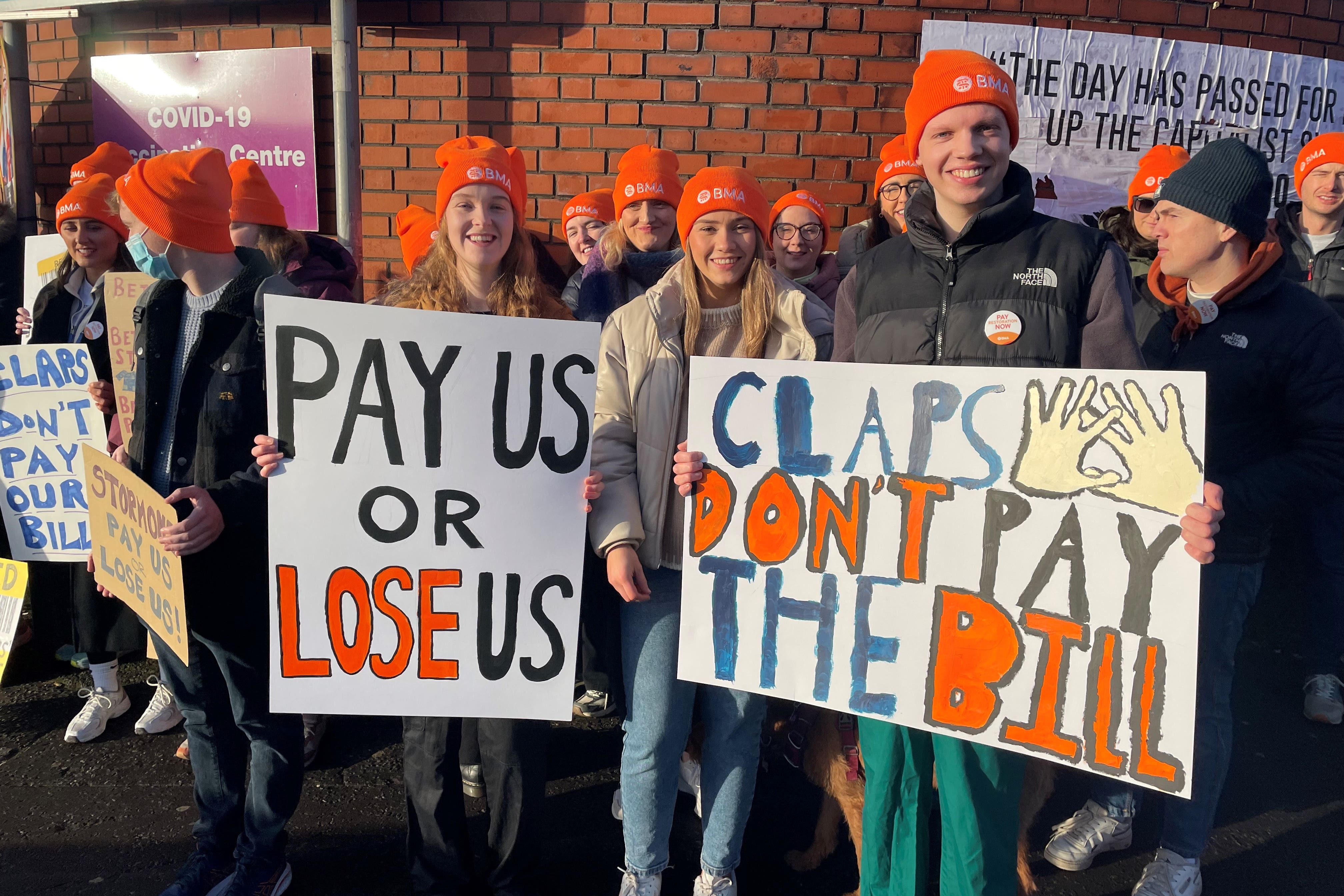NHS will need £8.5bn extra a year over next four years to tackle waiting lists
Ministers failed to deliver funding needed to meet demand, says Royal College of Nursing
Your support helps us to tell the story
From reproductive rights to climate change to Big Tech, The Independent is on the ground when the story is developing. Whether it's investigating the financials of Elon Musk's pro-Trump PAC or producing our latest documentary, 'The A Word', which shines a light on the American women fighting for reproductive rights, we know how important it is to parse out the facts from the messaging.
At such a critical moment in US history, we need reporters on the ground. Your donation allows us to keep sending journalists to speak to both sides of the story.
The Independent is trusted by Americans across the entire political spectrum. And unlike many other quality news outlets, we choose not to lock Americans out of our reporting and analysis with paywalls. We believe quality journalism should be available to everyone, paid for by those who can afford it.
Your support makes all the difference.The NHS needs an immediate cash injection of around £8.5bn a year over the next four years to tackle waiting lists, according to new research.
Leading experts said the cash was needed to make up a £32bn shortfall in funding in England and would help tackle problems such as high waiting lists, access to GPs, and worker shortages.
Researchers also warned doctors’ pay has fallen 25 per cent since 2008 when corrected for inflation.
The warning comes as junior doctors have voted for a further six months of strike action with 98 per cent voting yes in a ballot by the British Medical Association.
In the second report of the BMJ Commission on the Future of the NHS, economist at the Nuffield Trust John Appleby said that while the government’s recent spring budget funding pledges are a start, they do not go far enough.
The research said: “In the recent spring budget, the government has pledged a further £2.5bn for the NHS in England in 2024-25 to keep up day-to-day funding of the health service, with a further £3.4bn investment over three years to improve productivity through digital transformation.
“These figures, although a start, certainly will not make up the significant shortfall that the NHS now faces. But a start could be made with a real increase of 4 per cent for 2024/25, equivalent to around £8.5bn at 2022-23 prices.”

His team said annual spending on the NHS has previously increased on average by around 3.4 per cent in real terms, but budgets have not increased smoothly from year to year.
“Annual increases averaged 6.2 per cent over the decade from 2000 to 2010 but just 1.2 per cent between 2010 and 2020,” they said.
“This represents a significant financial gap in funding that has had a direct impact on the performance of the NHS and the quality of care it has been able to deliver.
Taking inflation into account, things look worse, the research said.
“Prospects for the financial year 2024-25 look bleak, with the Institute for Fiscal Studies analysis of planned day-to-day spending in England suggesting a real cut in funding of 1.2 per cent – equivalent to £2bn – plus a 0.75 per cent real cut for the Scottish NHS and only a modest real rise in Wales of 0.7 per cent.”
The team said worsening trends were “clearly evident” before the 2020 Covid pandemic, which also had its own impact.
It comes as a separate report on doctors’ pay in England shows it has declined by 25 per cent since 2008.
Analysis by the Office of Health Economics (OHE) for the BMJ found doctors’ salaries were falling behind those of other workers, including executives.
It said: “This fall, combined with a 25 per cent increase in the cost of living in the UK over the same period, is disproportionately affecting the purchasing power of lower-grade doctors.”
Researchers said the findings match what the British Medical Association (BMA) has been saying during doctor strikes over pay.
It added: “UK average earnings have dropped by 10 per cent in real terms across all work sectors, and by 18 per cent for executive roles, but the percentage decrease for doctors is much higher: 23 per cent for foundation year 1 doctors (FY1s), 32 per cent for FY2s, 27 per cent for registrars, and 23 per cent for consultants.”
Dr Vivek Trivedi, co-chair of the BMA junior doctors committee, said of the findings: “Both the private and public sectors experienced a fall in pay in real terms after the financial crash in 2008.
“But in the private sector, which makes up 80 per cent of the UK workforce, we saw pay levels rebound relatively quickly, while the public sector bore the brunt of austerity.”
A Department of Health and Social Care spokesman said: “We are providing the NHS with record funding of nearly £165bn a year by the end of this Parliament, an increase of 13 per cent in real terms compared to 2019.
“We announced in the Budget that the NHS in England will receive a £2.5bn day-to-day funding boost this year and a further £3.4 billion investment in the latest technology from 2025, allowing doctors and nurses to focus on patients rather than admin, leading to £35bn in savings.
“We have also set out the first ever Long Term Workforce Plan for the NHS, backed by more than £2.4bn, to ensure that the health service can train, recruit and retain the staff it will need in the years to come.”

Join our commenting forum
Join thought-provoking conversations, follow other Independent readers and see their replies
Comments